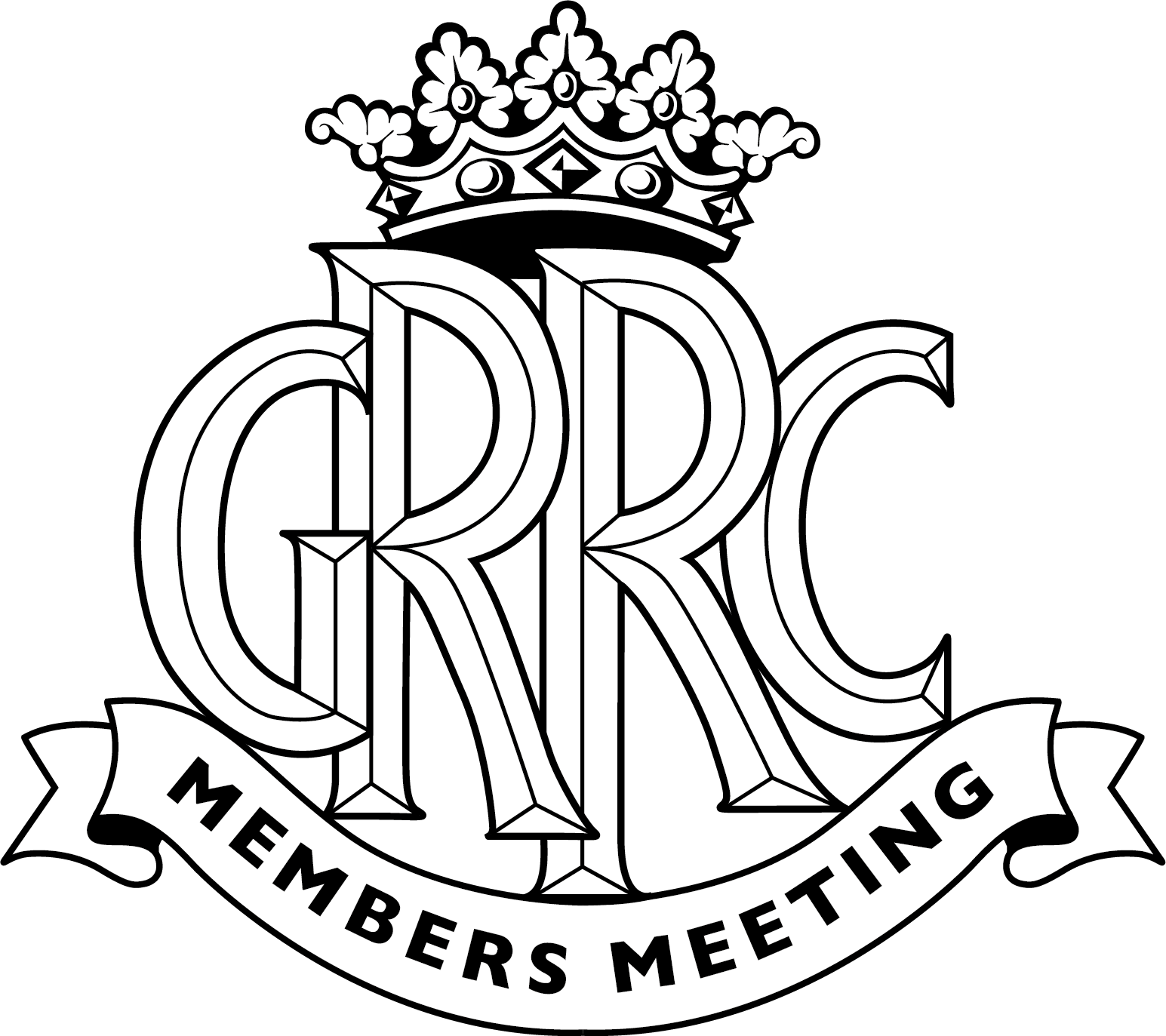Doug Nye: The InterContinental Formula - when regulation changes bred failure
 Doug Nye
Doug Nye
Whenever a major change in Formula takes place it is always accompanied – amongst enthusiasts – by a special frisson of anticipation. This year’s Formula 1 cars are going to look distinctively different from the sleek – if bulky – projectiles to which we have become used over the past three or four years. The cars will look even larger – though hopefully not simply great and – with their fatter tyres and wider wings, mounted rather lower at the rear, but early driver reaction is that they “go like dingbats” which considering 2016 norms is quite a substantial claim.

Goodwood was at the forefront of a Formula change when the long-lived old 2.5-litre Formula 1 regulations ran their course at the end of 1960. A replacement set of regulations had caused immense controversy. With Ferrari’s enthusiastic agreement – since they were being outclassed at the time – and with the support of Porsche – who wanted to upgrade from Formula 2 to Formula 1 racing without too big a financial hit – F1 engine capacity was being slashed by a full litre from 2.5-litres to 1.5 and what was more a hefty minimum weight limit would be enforced which made these under-powered little dodgems initially heavier than some of the larger-engined 1960 cars they replaced.
The regulation change had been announced at the end of the 1958 system by then FIA President M. Augustin Perouse. His announcement proved about as popular amongst the British constructors as the proverbial in a swimming pool. They clubbed together to present a united opposition to the FIA’s edict and declared support instead for a 3-litre InterContinental Formula. The added half a litre was intended to attract as many entries as possible from the United States and Australasia, but it would only prevail for one single season – through 1961 – and even then as a thinly-supported non-Championship category promoted only within the British racing scene. Only five International races would be run to the Formula. The series began with the Lombank Trophy race at Snetterton on March 26th, 1961, and would run through to the swansong Guards Trophy event at Brands Hatch on August 7th that year.
It attracted support from the major British works and private teams, plus additional entries in the shape of one of Californian Woolworths heir Lance Reventlow’s front-engined 1960 Scarabs – for his driver Chuck Daigh, a rear-engined tailor-made Vanwall – nicknamed ‘The Whale’ – to be driven by John Surtees – and assorted Italian-entered 4-cylinder Maserati and Ferrari-engined Coopers. Australian privateer Lex Davison would also weigh-in with his front-engined ex-works Aston Martin DBR4.
In mid-April 1961 it was confirmed that the existing 1960 2.5-litre BRMs would continue to be raced by the Bourne team, but it had also become apparent that Coventry Climax – supplier of 2.5-litre F1 engines to the likes of Cooper and Lotus – would be withdrawing their support from the big 4-cylinder FPF units, in order to concentrate upon the scaled-down 1.5-litre FPF Mark II units for the new FIA class.
In fact, as a British protest to the governing Commission Sportive International (of the FIA) had been rejected, it became obvious that the new small-capacity minimum-weight Grand Prix Formula really was here to stay. No new 3-litre engine would be completed specifically for InterContinental racing, and even though Climax did produce an enlarged 2.75-litre version of their big FPF – it was intended for Cooper’s Indianapolis ‘500’ venture with driver Jack Brabham.

Jack Brabham testing at Goodwood in his private Cooper - with personal mechanic Timmy Wall
In fact, the inaugural ICF race at Snetterton in March was won easily by reigning World Champion ‘Black Jack’ in his ‘Lowline’ Cooper-Climax T53 left over from the preceding GP Formula. Cliff Allison finished second in the UDT-Laystall Racing Team’s similarly superannuated Lotus-Climax 18, with John Surtees third in the Reg Parnell-managed Yeoman Credit Racing Team’s new production ‘Lowline’ Cooper-Climax T53P.
Nine days after Snetterton, Easter Monday Goodwood included an ICF race. In fact, the programme also included a 1.5-litre Formula 1 race. The Lavant Cup for the ‘3-litre’ single-seaters saw only nine starters. Bruce McLaren qualified on pole in C.T. ‘Tommy’ Atkins’s ‘Lowline’ Cooper, with Stirling Moss second-quickest in Rob Walker’s sister new ‘Lowline, whose fine-tuned and forgiving handling ‘The Maestro’ would rave about for years to come.
The circuit was drying rapidly after early rain as John Morgan of the BARC dropped his flag, and American driver Dan Gurney shot into an immediate lead in Louise Bryden-Brown’s Lotus 18. Moss was simply swamped at the start, and at the end of that opening lap Dan shot past the pits with a narrow lead over McLaren, then Chuck Daigh in the raucous, bellowing Scarab. Tony Brooks was fourth for BRM. Both Moss and Graham Hill of BRM began cutting their way through the thin field.
Chuck Daigh spun the Scarab, Graham Hill displaced his team-mate for third but on lap 3 Moss was about to slash by. Bruce McLaren managed to wrestle the lead from Dan Gurney’s Lotus and began immediately to pull away, but he could not prevent Moss hunting him down, catching and passing him to lead on lap 15.

Bruce McLaren on the 1961 Easter Monday grid in ‘Tommy' Atkins’s ‘Lowline’ Cooper
Bruce fought back, retaking the advantage, but Moss would not be denied and he finally took the chequered flag just 0.6 seconds ahead of Bruce’s metallic pale-green Cooper with Graham Hill – 19 seconds adrift – third for BRM in his rear-engined P48 car.
The third ICF race of the year was then run at Silverstone on May 6th, as that year’s BRDC International Trophy. Bruce McLaren again qualified on pole in the Atkins ‘Lowline’ Cooper with Moss alongside in the Goodwood-winning Walker car and Jack Brabham third-fastest in his own works-liveried ‘Lowline’. It was entered by The Brabham Racing Organisation as a first stepping stone towards the great Australian star’s independence from Cooper. Graham Hill’s BRM P48 completed the four-strong front row of the grid. At Goodwood Dan Gurney had bent Mrs Bryden-Brown’s Lotus 18 in a last-corner spin while dicing with Graham Hill. The car’s chassis had notionally been straightened in time for Silverstone, but during practice Dan found it handling in such an evil manner that he dropped it again, and ended his meeting perched on top of the bank at Beckett’s Corner, out of the race next day.
Heavy rain fell in time for the start, but Jack Brabham made a fine start to plume away into Copse Corner on the opening lap. Moss and McLaren were in hot pursuit, with Surtees’ bulky-looking rear-engined Vanwall fourth. In their wake Italian driver Massimo Natili spun off and rolled his Scuderia Centro Sud-entered Cooper at Club Corner, and at the uphill sweep of Abbey Curve Tony Brooks spun his BRM in formation with the twin Lotus 18s of Jim Clark and Innes Ireland. Yes – conditions were that bad.
Tony was first to rejoin, while Graham Hill spun his sister BRM at the same spot on the second lap and stamped about in the mud for some time trying to push his car back onto the asphalt, then managed to restart it, and rejoined – solid last. Trying to catch up he pushed too hard three laps later and spun at Club, this time losing nine laps rejoining, and spluttering into the pits – face as black as thunder, moustache dripping and after a quick check he rejoined the fray.

McLaren lost his ‘Lowline’ and crashed at Woodcote Corner. Moss lost his second place to Surtees before the multiple motorcycle World Champion spun at Abbey, and Stirling ultimately reeled in Brabham – as he pleased – and sailed by to lead.
Tony Brooks suffered the embarrassment of being passed by the irrepressible Chuck Daigh’s front-engined Scarab, before the American spun at Copse, and then again at Abbey where the puddles and stream of draining water clear across the track would probably have triggered a red flag in later years. Surtees also passed the struggling BRM. Ireland and Allison (UDT Lotus 18) had spins and on lap 71 – this was a looonng race – Ron Flockhart crashed at Copse.
In the closing laps, Tony brooks managed to save some pride by repassing Daigh’s Scarab for sixth. ‘Autosport’ reported “All the drivers came in soaked and miserable, but they all felt that ‘It was nice to drive a proper racing car again’” – none of the established Grand Prix drivers at that time rated the new 1.5-litre Formula 1 ‘kiddy cars’ at all.
Another ICF race – the fourth in the five-race series – took place at Silverstone on July 8th – the BRDC British Empire Trophy. You know what? It poured with rain again. Tony Vandervell had withdrawn his Vanwall ‘Whale’ and John Surtees drove his Yeoman Credit-entered Cooper instead. He promptly qualified on pole position, faster than Moss, McLaren and Brabham.
Moss made the best start to lead on a streaming track from Surtees, and the race developed with Stirling simply dancing away from the rest of the field in his beloved Rob Walker ‘Lowline’ Cooper. Bruce McLaren was fighting off the attention of Graham Hill in third place and by lap 15 Moss led Surtees by a staggering 26 seconds. Hill’s BRM took third place from the Atkins-entered Cooper but the race then settled into a high-speed procession, Moss leading Surtees and Hill. Moss’s mastery was never in doubt, despite Surtees and Hill both setting record pace towards the end, and yet another ICF race fell to the Rob Walker ‘Lowline’…

The InterContinental Formula was dominated by ‘Lowline’ Cooper-Climax success - here Bruce McLaren opposite locks at Madgwick in a despairing effort to deny Moss in the rival Walker Racing entry…
So just one final race remained for this short-lived Formula. On August 7th at Brands Hatch, the Guards Trophy saw Moss qualify on pole, 1.4 seconds faster than Bruce McLaren’s best time in second place on the front row of the grid. Surtees and Graham Hill completed the row.
And it was Surtees who led this time – in the dry – chased by Moss, Masten Gregory’s fast-starting UDT-Laystall Lotus 18, then Graham in the BRM P48, who quickly displaced the American. McLaren and Gregory then collided up at Druid’s Hairpin and the race settled with Brabham – head tucked down and clearly going for gold – beginning to threaten the leaders.
Jack displaced Hill then Moss for the lead – but Stirling quickly repassed him. Surtees crashed on oil at Clearways, elevating Hill’s BRM to third place once more. But Moss and then Innes Ireland ran into gearbox troubles and so Jack Brabham emerged as race leader from the two BRMs. But Tony Brooks’s PO48 coasted to a halt on the Portobello Straight with its throttle-linkage having fallen apart. Graham Hill’s sister BRM engine then fell off-tune and on lap 66 he spun at Stirling’s Bend. At the end of the 76 laps – these really were substantial motor races – Jack Brabham won for Cooper from Jimmy Clark’s works Lotus 18. ‘Black Jack’ had lapped everyone, and there were only six finishers as this attempt at a new-fangled Formula faded into unlamented oblivion.
In theory ICF lived-on with racing down-under in Australia and New Zealand, but there it had always been regarded as Formule Libre in any case. But that is another story…
Images courtesy of the GP Library
Doug Nye































































